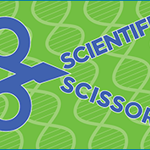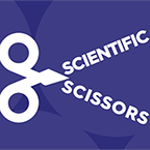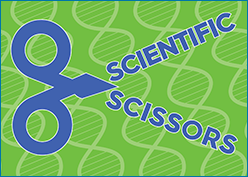Scientific Scissors is a collection of interactive activities exploring genome editing technologies.
The ethical card game discusses the possible applications and ethical issues surrounding genetic engineering, which can be used to engage adults and children alike.
Participants place cards that discuss a use of genetic engineering on a washing line, somewhere between “YES, that sounds great” and “NO, don’t do that”, based on their opinion of the genetic engineering applications. The activity has the option to discuss details of genome editing technologies, such as CRISPR-Cas9, depending on the participants.
Genetic Jenga uses the popular block-based game to demonstrate the impact of knocking-out genes.
Each block is labelled with a short length of DNA code, which simulates a gene corresponding to a characteristic. Participants select a gene from a bowl of paper, and have to remove that block using tongs that repesent scientific scissors (or Cas9). The participant has now knocked-out a gene!
Download the materials to run these activities below.
Scientific Scissors sticker templates
View our videos on engaging the public in discussions on genome editing to help you deliver the Scientific Scissors activity, produced in collaboration with the Federation of European Biochemical Societies (FEBS).
Videos
Genome editing is a way to change a DNA code.
It uses specialised molecular scissors called nucleases to cut the DNA chain at a specific site. One of the methods of doing this is known as CRISPR-Cas9, but there are others. We can guide these molecular scissors to cut at a specific part of the DNA using a short molecule called RNA that we can design in the lab. RNA is very similar to DNA, but it has only one strand. An RNA molecule can find and stick to a piece of DNA if they share the same sequence of chemical letters.
Now that we have read the whole human genome and know all of its DNA letters, we can choose exactly where to cut. After cutting the DNA, we can decide what happens to it: we can mend it with another piece of DNA so that we can correct mutations (mistakes in the DNA code which can cause disease) or put in a new piece of DNA; or we can deliberately break the DNA strand to see what happens if that particular part of the DNA instruction manual is broken or missing.



